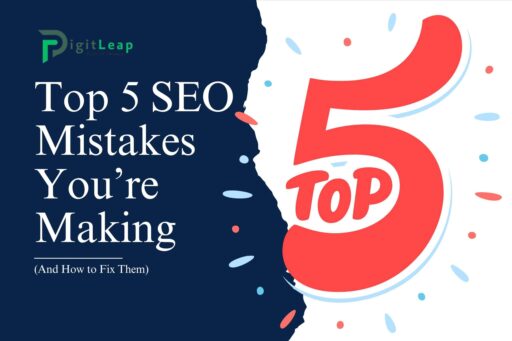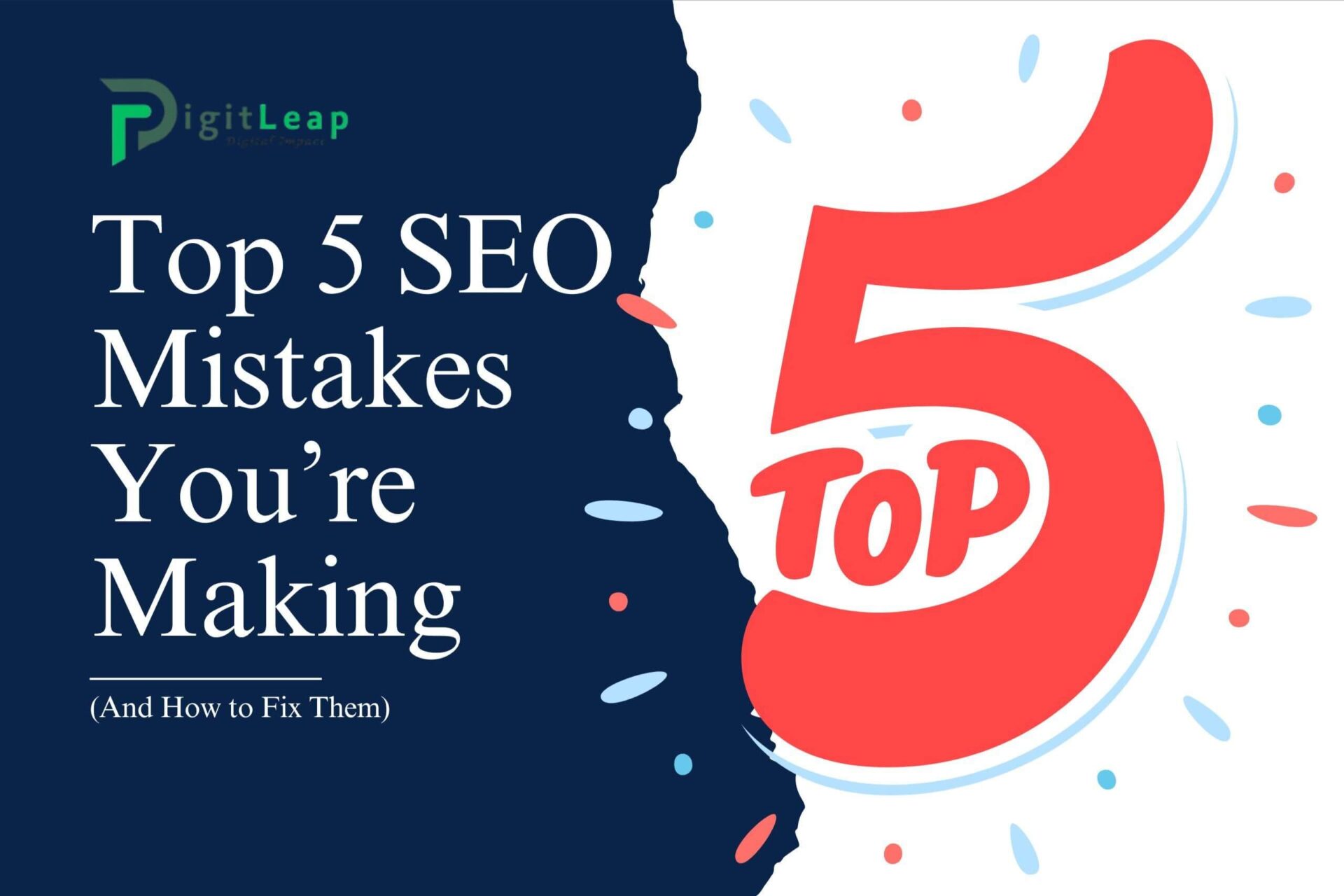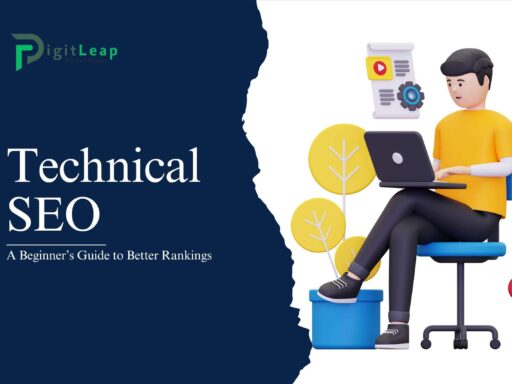Top 5 SEO Mistakes You’re Making (And How to Fix Them)
If you’re wondering why your website isn’t performing as well as you’d hoped in search engine rankings, you’re not alone. Many businesses make the same SEO mistakes without even realizing it. SEO (Search Engine Optimization) can feel like an overwhelming challenge, but once you know what’s going wrong, the path to fixing it becomes clearer.
In this article, we’re going to break down the top 5 SEO mistakes you might be making, along with actionable solutions to fix them. Ready to give your website the SEO tune-up it needs? Let’s dive in!
1. Neglecting Keyword Research
One of the biggest and most common mistakes in SEO is skipping keyword research or doing it incorrectly. Keywords are the backbone of SEO, and if you’re not using the right ones, your content won’t reach the audience you’re targeting.
The Mistake:
You might think you know what keywords your audience is searching for, but if you’re not conducting research, you could be way off base. Relying on vague or broad keywords is a quick way to lose potential traffic.
How to Fix It:
To fix this, start by using tools like Google Keyword Planner, SEMrush, or Ahrefs to find relevant keywords with high search volume and low competition. Focus on long-tail keywords, which are more specific and have less competition, leading to better chances of ranking.
For example, instead of targeting “fitness tips,” try something like “best fitness tips for beginners.” The more specific you get, the better your chances are of reaching the right audience.
2. Ignoring Meta Descriptions and Title Tags
Meta descriptions and title tags are vital for both search engines and users. They provide a snapshot of what your page is about and can heavily influence whether someone clicks on your result.
The Mistake:
You might be ignoring your meta descriptions or leaving them as automatic, generic lines pulled from your content. Worse, your title tags might not include your primary keywords.
How to Fix It:
Each page should have a unique and compelling meta description that includes your focus keyword. Keep it under 160 characters to ensure it’s not cut off in search results. The title tag should be concise, include your main keyword, and give users a clear reason to click.
Example of a good title tag: “Top Fitness Tips for Beginners – Start Your Journey Today!” Example of a good meta description: “Discover the best fitness tips for beginners, from workout routines to nutrition advice, and kickstart your health journey.”
3. Not Optimizing for Mobile Devices
With mobile traffic accounting for over half of global web traffic, a mobile-optimized website is no longer optional—it’s essential. Failing to provide a seamless mobile experience can harm your rankings and push users away.
The Mistake:
If your website isn’t mobile-friendly, users will have difficulty navigating it on their phones. This leads to high bounce rates, and Google notices this. Websites that aren’t optimized for mobile users are ranked lower in search results.
How to Fix It:
Start by testing your site on different mobile devices. You can use Google’s Mobile-Friendly Test to see how your website performs. Make sure your content is responsive, loads quickly, and that all elements (like buttons and images) work smoothly on smaller screens. Additionally, prioritize a clean, simple design that doesn’t overwhelm mobile users.
4. Overlooking Internal Linking
Internal links help search engines understand the structure of your website, and they can also encourage users to spend more time exploring your content. Yet, many people neglect this crucial part of SEO.
The Mistake:
You might be focusing on external links but ignoring how you link between pages on your own website. This makes it harder for both users and search engines to navigate your content.
How to Fix It:
Start linking relevant blog posts or pages within your site to each other. For example, if you have an article about “best fitness tips,” you can link to another post on your site about “beginner workout routines.” This not only improves your SEO but also keeps users on your site longer, which Google rewards with better rankings.
5. Failing to Produce High-Quality Content
Content is still king when it comes to SEO. Search engines like Google are constantly updating their algorithms to prioritize websites that provide valuable, relevant, and high-quality content.
The Mistake:
Some people focus too much on quantity over quality. Churning out articles filled with keywords but lacking in value won’t help you in the long run. Thin, repetitive content or content stuffed with keywords can actually hurt your SEO performance.
How to Fix It:
Instead of focusing on how many posts you can publish, shift your attention to quality. Ensure your content provides genuine value to your readers, answers their questions, and is easy to understand. Break up text with headings, bullet points, and images to improve readability. Make sure your content is well-researched, engaging, and free of spelling or grammatical errors.
Remember, it’s better to publish one well-crafted post per week than to publish five poorly written ones.
Conclusion
SEO can be complex, but avoiding these common mistakes will put you on the right path to improving your search engine rankings. The key is to stay proactive, consistently evaluate your website’s performance, and adjust your strategies when needed. By focusing on keyword research, meta descriptions, mobile optimization, internal linking, and high-quality content, you’ll be well on your way to ranking higher on search engines.
If you’re feeling overwhelmed by SEO or unsure where to start, our team at DigitLeap is here to help. We specialize in SEO strategy and content marketing to ensure that your website not only ranks higher but also attracts and retains the right audience. Let us take the guesswork out of SEO for you—reach out to us today for expert assistance!
FAQs
Q1. Why is keyword research important for SEO?
Keyword research ensures you’re targeting the terms that people are actually searching for. Without it, your content might not align with what your audience is looking for, meaning fewer clicks and lower rankings.
Q2. How do mobile-friendly websites impact SEO?
Google prioritizes mobile-friendly websites in its rankings, especially with the shift to mobile-first indexing. A poor mobile experience can result in high bounce rates, negatively impacting your SEO.
Q3. What are long-tail keywords, and why should I use them?
Long-tail keywords are more specific, longer phrases that tend to have lower competition. They often result in higher conversion rates because they target more precise search intent.
Q4. How often should I update my website’s SEO strategy?
SEO is an ongoing process. You should regularly monitor your website’s performance and make updates as needed, especially when there are changes in search engine algorithms or shifts in your industry’s trends.
Q5. What’s the difference between internal and external linking in SEO?
Internal linking refers to linking pages within your own website, helping users and search engines navigate your content. External linking, on the other hand, involves linking to relevant content on other websites, which can boost your site’s credibility. Both are important for SEO.






